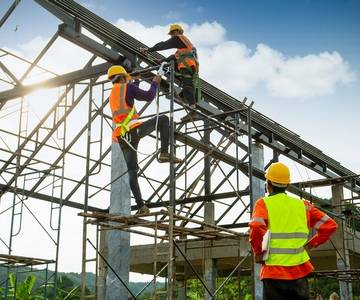
How to Set Up a Fall Protection Plan for Working at Heights

When working at heights, your focus must be emphasized on safety. There are many dangers associated with this line of work, from accidental falls to equipment mishaps. Whether your work involves heights every day, or it’s required on an occasional basis, the risks must be taken seriously. It takes just one careless mistake to turn a routine task into a fatality.
Any activity that involves the possibility of a worker falling and injuring themselves is considered working at heights. The injuries can occur in numerous places, such as a ladder, a roof’s edge, an opening in the floor, or even a loading dock. As the employer, it is your responsibility to create a fall protection plan for working at heights. Fall protection is a requirement for any work that involves heights of 3 metres or above.
Although working at heights comes with certain dangers, the scope of injuries is significantly reduced with a fall protection plan. The plan involves health and safety training, fall protection equipment, and setting up optimal conditions to minimize any risks. With some meticulous preparations, you can create a safe and responsible environment to protect your workers.
Follow these guidelines on how to create the best fall protection plan for working at heights:
Working at Heights Training

Make sure your fall protection plan includes a working at heights training program. This knowledge is essential in enforcing safety around fall protection. The important lessons will inform you about the best practices when working at heights. Each lesson is designed to improve your awareness, from using fall protection equipment properly to understanding workplace safety protocols carefully.
In working at heights training, you will learn extensive information on how to use the following equipment properly:
- Fall arrest systems
- Fall restricting systems
- Safety belts
- Safety nets
- Travel restricting systems
Understandably, some workers might not feel excited about studying concepts and guidelines. However, the importance of these training lessons must be emphasized. Do not assume that you already know most of this information, since the complacency can possibly get you or others hurt. Think of each training lesson as a valuable reminder of the safety precautions, which can brush up or build upon your existing knowledge.
Once you complete the training, workers will feel more comfortable and empowered whenever they are working at heights. They will know how to avoid dangerous practices, exercise appropriate caution, and remain vigilant about the latest fall protection regulations.
Fall Protection Equipment

A fall protection plan involves the use of specialized equipment to keep workers safe. Businesses must be prepared to invest in the different types of fall protection equipment for their workplaces. These tools and accessories are the most critical parts of your fall protection plan. The equipment costs are incomparable to the immense value you get from protecting your workers’ lives.
The fall protection systems are classified under two categories: passive fall protection and active fall protection. Passive fall protection describes the safety systems that are implemented in a stationary location. Active fall protection describes any safety equipment that requires participation from the worker. Fall protection plans often make use of both passive and active equipment to maximize safety measures.
Here are some examples of passive fall protection equipment, which are static and designed to remain in one place:
- Guardrails
- Safety netting
- Barricades
Here are some examples of active fall protection equipment, which are dynamic and designed to work in coordination with the worker:
- Harnesses
- Lanyards
- Body belts
The best fall protection safety equipment varies depending on the workplace conditions, so there’s no one-size-fits-all solution. A scaffold might be the ideal equipment for washing low-level windows, but they won’t be practical for projects that involve taller heights. In these instances, you may have to use harnesses instead. For your fall protection plan, make sure you understand each unique workplace before deciding on the most appropriate equipment.
Safe Workplace Conditions

The purpose of a fall protection plan is to create the safest conditions for anyone working at heights. Any safety training or equipment can only be useful when they are applied in a secure environment. If the workplace has unnecessary hazards, you are introducing unanticipated risks that will jeopardize the effectiveness of the training and equipment. This is why businesses must ensure the workplace conditions are as safe as possible.
There are numerous ways to minimize the dangers in a working at heights environment:
- Set up railing wherever possible. This passive fall protection equipment is easy to install in many workplace environments. Train workers to stay within the boundaries of the railing.
- Know the weather forecast. Beware of wind, rain, ice, snow, thunder, and lightning as they introduce volatility to working at heights. Work must be suspended if the weather conditions become too unsteady and severe.
- Enforce regular equipment maintenance. Old fall protection equipment may stop being functional or fail to meet safety requirements. A trained professional should inspect the equipment before use each time.
As a company, it is your duty to assess the working conditions and make necessary improvements to optimize the safety. Workers should always be able to feel comfortable about their environment without having to navigate through hazards. Ensure there are trained professionals with the ability to identify risks and the authority to make safety corrections.
The best fall protection plan relies heavily on awareness, caution, and diligence, which can be achieved through training courses. For more information, contact Safety First Consulting to learn more about our working at heights training programs.

